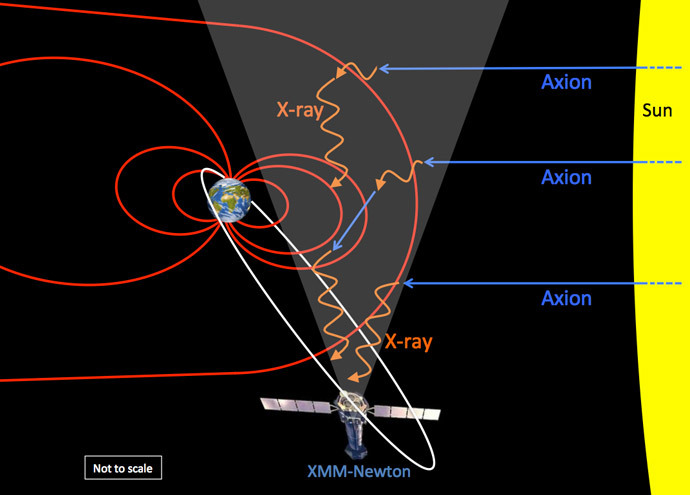Finally detected? Elusive dark matter may be streaming from glaring Sun

A European space observatory picked up an unusual signal which British astronomers believe to be the first direct detection of dark matter’s signature. The finding could be a historic breakthrough in our understanding of the universe.
Invisible dark matter – which neither emits or absorbs light – is
believed to account for 85 percent of the matter in the universe,
and is thought to explain the gravitational pull that keeps
galaxies from flying apart.
It has been a mystery for over 30 years – but now a potential
clue has been found by scientists in Leicester, UK. An
inexplicable signal was discovered in data obtained by nearly 15
years of measurements by the European Space Agency’s orbiting
XMM-Newton observatory. A study by
astronomers at the University of Leicester will be published on
Monday in the Monthly Notices of the Royal Astronomical Society
journal.

“The X-ray background – the sky, after the bright X-ray
sources are removed – appears to be unchanged whenever you look
at it,” explained senior paper author Andy Read in a
press release. “However, we have
discovered a seasonal signal in this X-ray background, which has
no conventional explanation, but is consistent with the discovery
of axions.”
Axion is a hypothetical dark matter particle, which has been
searched for – unsuccessfully so far – by the European
Organization for Nuclear Research (CERN), located in Switzerland.
If the Leicester team has indeed detected axion, the particles
are incredibly light, with a mass of around a hundred billionth
of an electron.
“If the model is right then it could well be axions that we
are seeing and they could explain a component of the dark matter
that everyone thinks exists,” Read told the Guardian.
The researchers noticed a curious background signal component
that was greater in summer than in winter. The intensity of
x-rays increased by approximately 10 percent whenever the
spacecraft observed the boundary of Earth’s magnetic field,
facing towards the Sun.
After “all other possible causes of the variability [had
been] carefully considered and conclusively ruled out,” the
astronomers proposed a new idea which stood out from traditional
physics. In fact, Read described it as an “exotic” idea.
Axions are “indeed produced in the core of the Sun and do
indeed convert to soft x-rays in the magnetic field of the Earth,
giving rise to a significant, seasonally-variable component”
of the background radiation, Professor Fraser explained in the
paper.
Martin Barstow, president of the Royal Astronomical Society,
said: “This is an amazing result. If confirmed, it will be
the first direct detection and identification of the elusive dark
matter particles and will have a fundamental impact on our
theories of the universe.”
The findings may take several years to check, but Read said that
a similar signal had been detected by NASA’s Chandra X-ray
Observatory. “In a few years, we might be able to double the
dataset from XMM-Newton and look at this with more
precision,” he said.
The Leicester astronomers shared their excitement over the
discoveries that “could be truly ground-breaking, potentially
opening a window to new physics, and could have huge
implications, not only for our understanding of the true x-ray
sky, but also for identifying the dark matter that dominates the
mass content of the cosmos.”
The notion of dark matter's existence was first proposed by Swiss
astronomer Fritz Zwicky in the 1930s. For decades, scientists
studying dark matter were underestimating its vast presence in
the universe. It wasn't until 2012 that a new mass-measuring
technique revealed that there should be
“plenty” of dark matter near the Sun.














